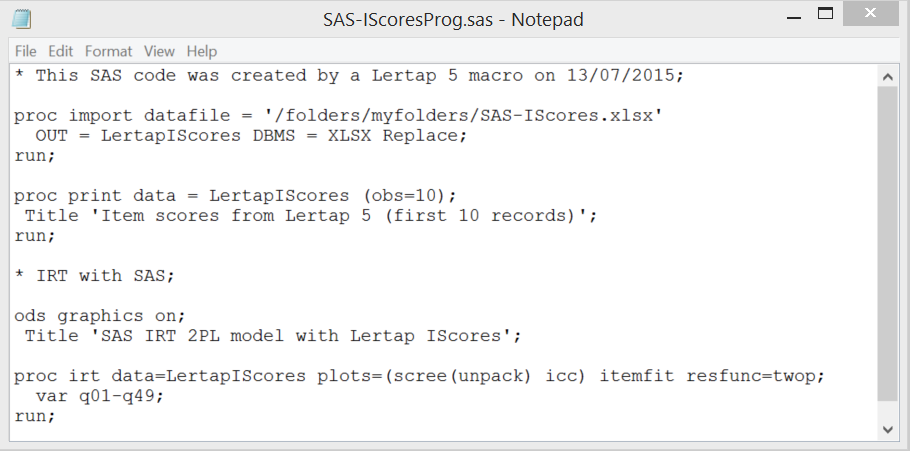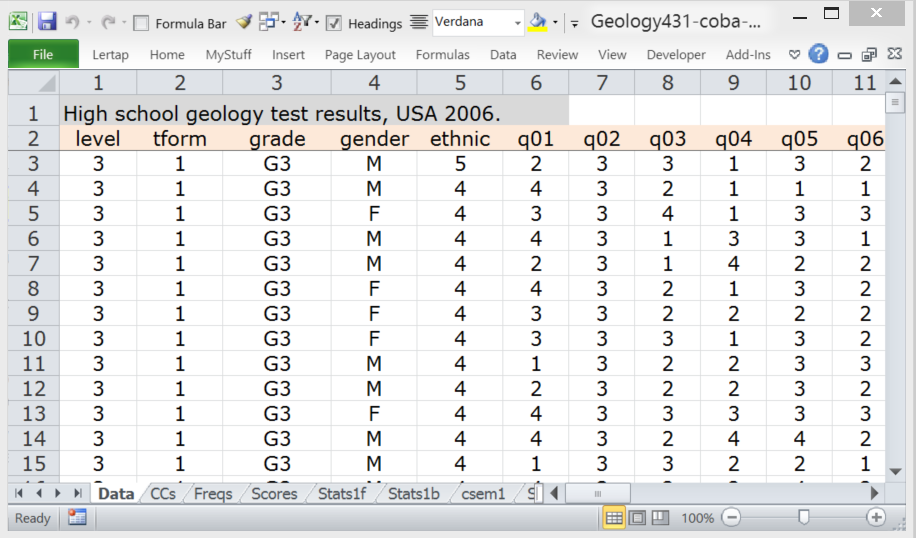IRTsas1
This macro is designed to set things up for an IRT analysis using SAS.
The macro begins by looking in the currently open Excel workbook for an IScores worksheet. If it can't find one, it then looks for an IStats worksheet and uses it to create an IScores sheet.
Once an IScores worksheet is on hand, the macro creates a new workbook and copies the IScores worksheet to it. The new workbook will be called SAS-IScores.xlsx.
The macro will also create a bit of SAS code. This is placed in a file called SAS-IScoresProg.sas. An example of the SAS code created by the macro is shown here:

The code seen in this little example assumes that the SAS user has set up to work with SAS Studio, as will be the case when working with the free University Edition of SAS released in the year 2014 -- users of this version may use the suggested default working folder, "myfolders", as seen above.
Note the "var q01-q49" code line above. It tells SAS that the variables to use in the IRT analysis start with the variable named "q01" and work over to the variable "q49". These names have been picked up (in this case) from the headers in a Lertap 5 Data worksheet:

The macro will change the variable names automatically, using whatever is found as headers in the Data worksheet.
Related tidbits:
This macro was inspired by two events: the release of the free SAS University Edition, and a 2014 book by Cody and Smith, "Test Scoring and Analysis Using SAS".
(Many of the item and test analysis capabilities in Lertap 5 have counterparts in SAS.)
To branch directly to the SAS IRT Proc description, click here.
